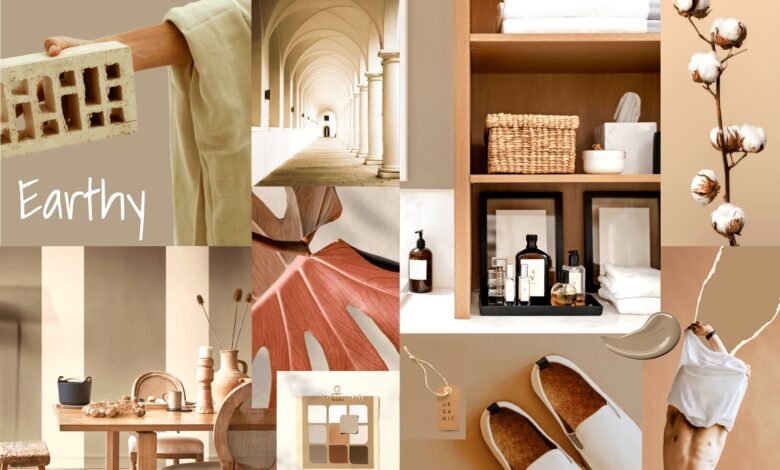Mood Boards: How to Plan Your Room’s Interior Like a Pro
n this guide, we’ll explore everything you need to know about using a mood boards to plan your room’s interior like a pro.

Planning the perfect interior for your room can feel overwhelming, but with the right tools and approach, you can transform your space like a seasoned interior designer. One of the most effective tools in interior design is the mood boards. This visual planning tool can help bring your ideas to life and streamline the decorating process. In this guide, we’ll explore everything you need to know about using a mood board to plan your room’s interior like a pro.
What is a Mood Board?
A mood board is a collage of images, textures, colors, patterns, and objects that capture the essence of a design idea. It’s used across various creative industries such as fashion, branding, and especially interior design. Mood boards help organize thoughts, communicate a vision, and inspire creativity.
In interior design, a mood board acts as a blueprint that allows you to experiment with different styles, color palettes, furniture, and accessories without making any permanent changes.
Why Use a Mood Board for Interior Planning?
Here are several compelling reasons to use a mood board when designing a room:
- Visualize the Design: Seeing all your elements in one place helps you understand how they work together.
- Refine Your Style: Whether your style is modern, rustic, bohemian, or eclectic, a mood board lets you fine-tune it.
- Save Time and Money: By planning ahead, you avoid costly design mistakes and impulsive purchases.
- Improve Communication: If you’re working with a designer or contractor, a mood board helps you clearly communicate your vision.
Types of Mood Boards
There are several types of mood boards you can create depending on your preferences and project scope:
- Physical Mood Boards: These are created with tangible items like fabric swatches, magazine clippings, and paint chips pinned onto a board.
- Digital Mood Boards: Tools like Canva, Pinterest, and Adobe Spark allow you to create digital collages easily.
- Hybrid Mood Boards: Combine both physical and digital elements for a comprehensive approach.
Steps to Create a Mood Board for Your Room
Step 1: Define the Purpose of the Room
Start by identifying how you plan to use the room. Is it a serene bedroom retreat, a productive home office, or a lively entertainment space? The function of the room should guide your design decisions.
Step 2: Find Inspiration
Collect images from interior design magazines, Pinterest, Instagram, and decor blogs. Look for color schemes, furniture styles, lighting, and layout ideas that resonate with your vision.
Step 3: Choose a Color Scheme
A cohesive color palette is essential for a unified look. Select 3-5 colors that set the tone of your space. Consider using a mix of neutral tones and accent colors. Your mood board should reflect these hues consistently.
Step 4: Select Furniture and Decor
Add images of furniture, rugs, lighting, wall art, and accessories that suit your design theme. Make sure each item contributes to the overall feel of the room.
Step 5: Incorporate Textures and Patterns
Textures add depth, and patterns inject personality into your space. Use elements like wood grain, metallics, linen, or velvet to create visual interest. Your mood board should include swatches or images that showcase these elements.
Step 6: Organize Your Mood Board
Arrange your elements in a way that tells a visual story. Group items by function or aesthetic. Don’t overcrowd the board; instead, aim for a balanced composition that communicates your room’s theme.
Tools for Creating Mood Boards
Here are some popular tools to help you craft your mood board:
- Canva: Offers a range of templates for mood boards.
- Pinterest: Ideal for collecting and organizing inspiration.
- Adobe Illustrator or Photoshop: For advanced users who want complete control over layout.
- Morpholio Board: Tailored specifically for interior designers.
- Olioboard: A user-friendly tool designed for creating interior design mood boards.
Common Room Styles to Explore in Your Mood Board
Identifying a clear design style is crucial. Here are a few popular interior design styles you might want to showcase in your mood board:
Modern
Characterized by clean lines, neutral colors, and minimal decor. Use your mood board to highlight sleek furniture and monochromatic color schemes.
Bohemian
An eclectic mix of textures, patterns, and colors. Your mood board might include tapestries, plants, and global-inspired decor.
Scandinavian
Simple, functional, and cozy. This style includes white walls, wooden elements, and soft textiles.
Industrial
Inspired by warehouses and urban lofts. Think exposed brick, metal finishes, and reclaimed wood.
Traditional
Rich colors, classic furniture, and elegant decor elements define this style.
Tips for a Professional-Looking Mood Board
- Stay Consistent: Stick to one theme or style to avoid visual confusion.
- Edit Ruthlessly: Less is more. Choose only the most impactful images.
- Include Text: Add labels or brief notes to explain choices or highlight key pieces.
- Use High-Quality Images: Crisp, clear visuals make a stronger impression.
Mood Board Examples
Example 1: Coastal Bedroom Mood Board
- Color palette: Aqua, sand, white, navy
- Key elements: Rattan bed frame, ocean-themed wall art, striped linens, driftwood lamp
- Textures: Linen, seagrass, weathered wood
Example 2: Modern Home Office Mood Board
- Color palette: Black, white, grey, forest green
- Key elements: Ergonomic chair, minimalist desk, green plant, abstract art
- Textures: Matte metal, smooth leather, wool
How to Use Your Mood Board
Once your mood board is complete, use it as a reference throughout the decorating process. Take it with you when shopping for furniture or paint. Show it to your contractor or interior designer. It serves as your North Star, keeping your design on track.
Evolving Your Mood Board
Your mood board isn’t set in stone. As your tastes evolve or as you find new pieces, don’t hesitate to update it. Keeping your mood board current ensures your room reflects your style and meets your needs.
Incorporating Sustainability into Your Mood Board
Modern interior design increasingly values sustainability. When selecting elements for your mood board, consider eco-friendly materials and products. Look for reclaimed wood, non-toxic paint, and vintage or upcycled furniture.
Final Thoughts
Creating a mood board is not just a fun exercise; it’s a powerful planning tool that brings clarity, inspiration, and direction to your interior design process. Whether you’re redecorating a single room or planning an entire home makeover, using a mood board can help you achieve a polished, professional look.
Use the techniques, tips, and tools outlined in this guide to plan your room’s interior like a pro. With the help of a well-crafted mood board, your dream space is closer than ever.











